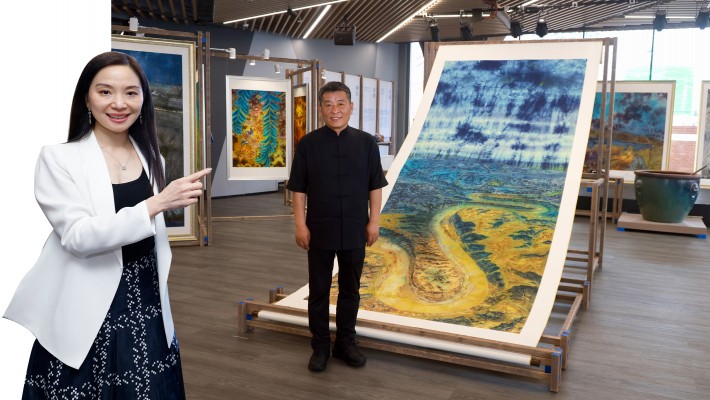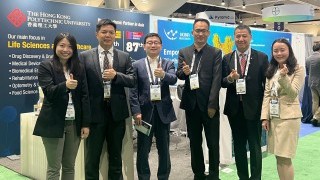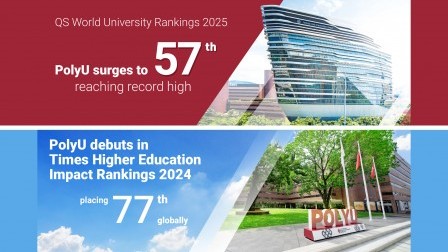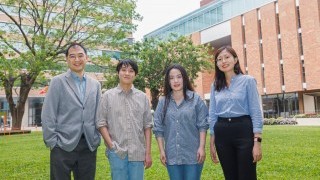PolyU Chinese Culture Festival: unique beauty of Chinese indigo dyeing
Other Articles
The traditional Chinese art of Ranxie, which involves dyeing silk fabrics with intricate figures, was the latest showcase of the PolyU Chinese Culture Festival. A collection of Ranxie artworks was featured in the event “Indigo Dyeing from the Blue — The Silk Road Textile Dyeing Enters Hong Kong”, collaboratively organised by Beijing Union University, Lanzhou Jiaotong University, and PolyU.
Professor Joanne Yip, Associate Dean (Industrial Partnership) of the School of Fashion and Textiles, offered insights into the unique beauty of Ranxie in a radio interview. She highlighted the patience and precision required and the exquisite techniques, including the Ranxie “Four Techniques”: twist-dyeing, wax-resist dyeing, clamp-dyeing, and ash-dyeing, required in producing the artworks. “Each art piece took nearly half a year to produce. Achieving the precise colour changes, particularly the blues, is a formidable challenge. Appreciating these artworks means recognising both their intricacy and the dynamic play of colours.”
One of the exhibition’s standout pieces was the Yellow River, in which the artist, Professor Guan Lansheng, Professor of Beijing Union University and an Inheritor of the intangible cultural heritage “Ranxie Tie-dye Technique”, used real soil and mud to extract colours to capture the river’s golden hues, while the indigo-dyed sky exhibited artistic mastery.
Professor Yip also explored the characteristics of Chinese indigo-dyeing, distinguishing it from its Silk Road counterparts in India and Turkey. With its vibrant depictions of flora, dragons, and landscapes, China’s dyeing tradition vividly celebrates its deep cultural history.
Ranxie is more than just an art form; it symbolises the lasting connections established along the ancient Silk Road, holding immense cultural value today and fostering a broad network of cultural exchange. The excavation of dyed and printed textiles along the Silk Road has highlighted their significant cultural preservation value, leading to the revival of this ancient technique.
Besides a two-week exhibition across the PolyU campus and in Hotel ICON, the event also featured a seminar, workshops, and guided tours, for participants to experience the wisdom and joy of these traditional crafts.
Since its launch in March, the PolyU Chinese Culture Festival has featured diverse artistic forms and themes, enhancing the appreciation of Chinese culture among the PolyU community and the public.
To listen to Professor Yip’s radio interview, please visit:
RTHK (00:34 - 10:47)
Stay tuned for more events from the PolyU Chinese Cultural Festival.






